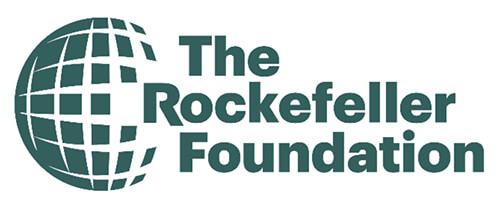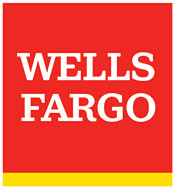Identify program focus areas.
- Using community data and community priorities, establish clear racial equity, housing, workforce development, health, and environmental justice goals for both engagement activities and program outcomes.
- Alongside other program goals, make greenhouse gas emission reductions a metric for program success.1 Other program goals and metrics may be related to affordability, health and safety, workforce development, racial and social equity, and energy cost reduction. In R2E2's opinion, program goals should also specifically include emission reduction goals to ensure that this priority of building upgrade programs is pursued. For more information on this consideration, please see ACEEE's Climate-Forward Efficiency Initiative.
Establish program upgrade offerings.
- Prioritize comprehensive efficiency upgrades and electrification in program offerings.
- Pair electrification of heating and cooling equipment and building envelope upgrades with onsite generation to help ensure that energy bills do not increase.2 Where onsite generation is not possible, R2E2 recommends that both owners and renters consider community solar where it is available. For more information on community solar, see DOE's primer on community solar.
- Avoid installing new fossil fuel appliances.
- Include passive strategies for reducing energy costs, including shading, green roofs, and cool roofs.5 American Council for an Energy-Efficient Economy (ACEEE). 2021. “Community-Wide Summary” database.aceee.org/city/mitigation-urban-heat-islands.
Design program offerings to prevent increased household costs and displacement.
- Protect housing affordability for unsubsidized rental properties that are not subject to pre-existing affordability commitments.6 WAP also offers a potential path for protecting housing affordability for unsubsidized rental properties. WAP allows states to set their own affordability restrictions (DOE Regulation 10 CFR 440.22b3) for unsubsidized units that make use of WAP funding. Program administrators should check with the WAP implementor in their locality to see what affordability restrictions apply for unsubsidized properties. See this DOE FAQ for more details. 7 For additional program examples, see ACEEE’s Energy Equity for Renters initiative. The policy tracker lists several more programs that provide rental efficiency loans and grants in exchange for affordability covenants.
- Minimize temporary disruptions and permanent displacement risks due to upgrades.
- Reduce energy bills and operations costs for rental property owners, homeowners, and renters.
- Get involved in or begin electricity rate-setting discussions with relevant stakeholders.
- Provide education to building owners and renters on how to control energy costs.
- 1Other program goals and metrics may be related to affordability, health and safety, workforce development, racial and social equity, and energy cost reduction. In R2E2's opinion, program goals should also specifically include emission reduction goals to ensure that this priority of building upgrade programs is pursued. For more information on this consideration, please see ACEEE's Climate-Forward Efficiency Initiative.
- 2Where onsite generation is not possible, R2E2 recommends that both owners and renters consider community solar where it is available. For more information on community solar, see DOE's primer on community solar.
- 3Mark Kresowik. 2023. “Leading States Embracing Climate-Forward Efficiency.” ACEEE Blog, July 26. aceee.org/blog-post/2023/07/leading-states-embracing-climate-forward-efficiency.
- 4Kiki Velez. 2023. ” Progress Report: How States Are Kicking Gas.” NRDC Blog, December 12. nrdc.org/bio/kiki-velez/state-progress-report-kicking-gas.
- 5American Council for an Energy-Efficient Economy (ACEEE). 2021. “Community-Wide Summary” database.aceee.org/city/mitigation-urban-heat-islands.
- 6WAP also offers a potential path for protecting housing affordability for unsubsidized rental properties. WAP allows states to set their own affordability restrictions (DOE Regulation 10 CFR 440.22b3) for unsubsidized units that make use of WAP funding. Program administrators should check with the WAP implementor in their locality to see what affordability restrictions apply for unsubsidized properties. See this DOE FAQ for more details.
- 7For additional program examples, see ACEEE’s Energy Equity for Renters initiative. The policy tracker lists several more programs that provide rental efficiency loans and grants in exchange for affordability covenants.
- 8Good cause eviction broadly refers to policies that require owners of rental housing to stipulate a "good cause" for terminating or not renewing leases. In Philadelphia, examples of good cause reasonsinclude habitual non-payment or late payment of rent, breach of or non-compliance with lease terms, nuisance activity, and more.
- 9Yim, E., and S. Subramanian. 2023. Equity and Electrification-Driven Rate Policy Options. Washington, DC: ACEEE. aceee.org/white-paper/2023/09/equity-andelectrification-driven-rate-policy-options. For Fiscal Year 2023, the household energy burden for a median-income Nevada household ($85,150) was 2.29%.
- 10Yim, E., and S. Subramanian. 2023. Equity and Electrification-Driven Rate Policy Options. Washington, DC: ACEEE. aceee.org/white-paper/2023/09/equity-andelectrification-driven-rate-policy-options.








